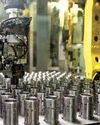To transition from a net importer of armaments to a key player in the world mart, India needs a new ecosystem for defence production.

AT DEF EXPO 2018 IN CHENNAI in mid-April, India displayed the indigenously built BrahMos missile and the Tejas Light Combat Aircraft to showcase its advancements in defence production. Obviously, India sees herself as an exporter of military hardware in the years ahead and not as the net importer that it is now. Perhaps, that is precisely what the new Defence Production Policy 2018 unfurled late in March also strives to do.
Seven decades after Independence and a labyrinth of ordnance factories that have only grown in numbers since, India continues to purchase 60 per cent of its defence equipment from the global mart. India’s annual purchase of military hardware is close to $5.5 billion, or more than the combined armament purchases of China and Pakistan.
Announcing its Make in India initiative in 2014, the A Narendra Modi government had underscored the financial drain in arms imports and the absence of a coherent policy to overcome it. As many as eight defence public sector undertakings (DPSUs), 41 ordnance factories (OFs) and 49 Defence Research and Development Organisation (DRDO) laboratories dot the country. This massive infrastructure has enabled development of indigenous technology and products like communications and missile technology, but complex military hardware still has to be purchased abroad. The technological chasm between the best in the market and homegrown hardware remains significant.
This story is from the {{IssueName}} edition of {{MagazineName}}.
Start your 7-day Magzter GOLD free trial to access thousands of curated premium stories, and 9,000+ magazines and newspapers.
Already a subscriber ? Sign In
This story is from the {{IssueName}} edition of {{MagazineName}}.
Start your 7-day Magzter GOLD free trial to access thousands of curated premium stories, and 9,000+ magazines and newspapers.
Already a subscriber? Sign In

MEMORIES & IMPRESSIONS
Ratan Tata was an exceptional human being. He was a visionary leader, esteemed industrialist, and a humanitarian, who left an indelible mark on India and the world.

The Robotaxi Market
The robotaxi market is shaping up to be a high-stakes battleground as tech giants and automakers race to transform urban mobility.

And the Nobel Prize Goes to AI
The recent Nobel Prize T awards to AI pioneers affiliated with Google have sparked a broader conversation about Big Tech's influence on research and the limitations of traditional prize categories.

Ola Electrified
Once considered a trailblazer in India’s electric vehicle (EV) ecosystem, Bhavish Aggarwal’s Ola Electric now faces a major accountability crisis.

Sharp Slide in Industrial Output on Eve of Deepavali
India’s index of industrial production (IIP) saw a sharp reversal in August, contracting by 0.1 per cent, in stark contrast to the 4.7 per cent growth in July, mostly because of significant contractions in mining and electricity generation.

Heralding the Solar Era with Sustainable Electrification
RAJEEV KASHYAP on the economics of solar power, the hurdles in scaling it, and much more

A WELL-GREASED MACHINE
The OmniBook X14 laptop runs on first-generation Snapdragon X Elite, which bets big on Al-enabled productivity and battery life, but falls short when it comes to overall experience, says Deep Majumdar

DO NOT LETA HEALTH CRISIS RUIN YOUR FINANCIAL HEALTH
For a family of four living in a metro, it is recommended to opt for a family floater health insurance plan with a sum insured of at least Rs 15-20 lakh

Disruption Ahead: Beyond Organisation Charts and Structures
ALBERT EINSTEIN FAMOUSLY said, “We cannot solve our problems with the same thinking we used when we created them.

Dr. Rahul Shivajirao Kadam: A Visionary Leader Blending Sustainability, Innovation, And Social Empowerment
We are on the stage of global warming, and these technologies not only help prevent further damage but also leave behind a better environment for future generations.